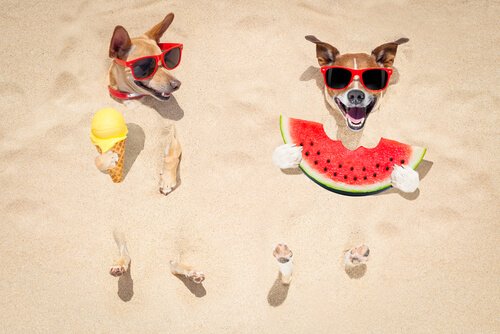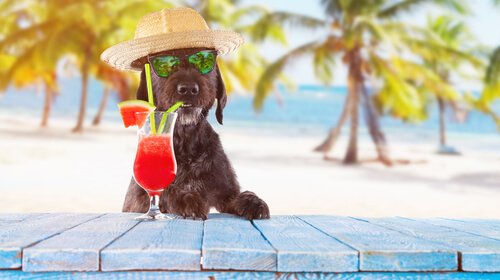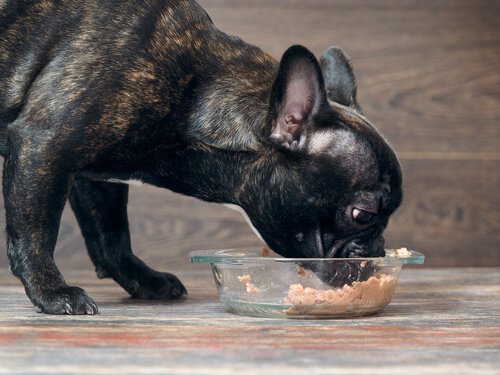My Dog Doesn't Eat When It's Hot Outside

With the arrival of summer, it’s very common for pets to have less of an appetite. In general, it’s believed that this is due to the increase in temperature, but the extra hours of light is also a determining factor. Below, you can analyze the reasons why your dog doesn’t eat when it is hot out. Also, you can learn how to activate their appetite.
Why does my dog not eat when it is hot outside?
Most dogs eat less in the summer and it’s quite noticeable. However, their appetite already begins to decrease during the second half of spring. Due to it happening gradually, sometimes owners might not notice it until a few weeks have passed.
Why does this lack of appetite happen? The heat can affect some of your pet’s habits that require special care in order for them to remain healthy. Dehydration and heat stroke are among the biggest risks during summer. Likewise, they will get fatigued more often and their physical activity will decrease.
Unlike humans, dogs don’t sweat through their skin. They only have sweat glands in their paw pads. To regulate their body temperature, they cool down by panting.
When it’s very hot outise, it’s likely that the animal will need to drink more water than eating because the liquied will help cool down them down.

Light also influences their appetite
Despite the aforementioned, it’s not only the high temperatures that cause dogs to have a reduced appetite in the summer. Although there is no exact explanaiton for this phenomenon, it has been observed that there are many mammals that naturally reduce their food intake when there are more hours of sun during the day.
When winter starts and days become shorter, animals eat more. It’s assumed that the brain associates the decrease in light with the arrival of winter. This triggers a message to the endocrine system, which orders the body to accelerate its metabolism in order to store nutrients and prepare itself for food shortages.
On the contrary, when there are many hours of sun and food is abundant, the metabolism returns to its normal state. This is reflected not only in a less intense appetite, but also in more serene behavior.
What should I do if my dog doesn’t eat when it’s hot outside?
First, it’s important to understand that it is natural for dogs to lose their appetite in the summer. If your dog does not eat when it’s hot, it’s neither advisable nor effective to force them to eat food. It’s important to be vigilant to keep the animal from losing weight and developing a pattern of malnutrition.
Tips for feeding your dog in the summer

Reinforce their fluid intake
Your dog must have fresh and clean water available throughout the year. In addition, you must reinforce their hydration when temperatures start to increase. To do so, you can encourage your dog to drink more liquids with healthy and fresh drinks, like fruit juices, for example.
You can also give them yogurt and kefir to increase their hydration and keep them healthy. These natural probiotics can be excellent to replenish their intestinal flora, improve their digestion and strengthen your immune system.
Give them moist foods
Moist dog foods are really good for your dog during the summer. On the one hand, they stimulate their appetite due to the more pleasant aromas and textures than dry food. On the other hand, they help reinforce their hydration by adding a good level of fluids to their normal diet.
One good option is to prepare homemade food for your pet, with natural, organic foods. It’s important to make sure your dog isn’t allergic to certain ingredients, such as eggs, chicken, fish or cereals. You must consult with a trusted veterinarian before making any changes in your dog’s diet.
Alternatively, you could choose a simpler solution and add water or chicken broth to their food. As a result, you will make a porridge with the soaked feed. Just be sure to let it cool before offering it to your dog.
